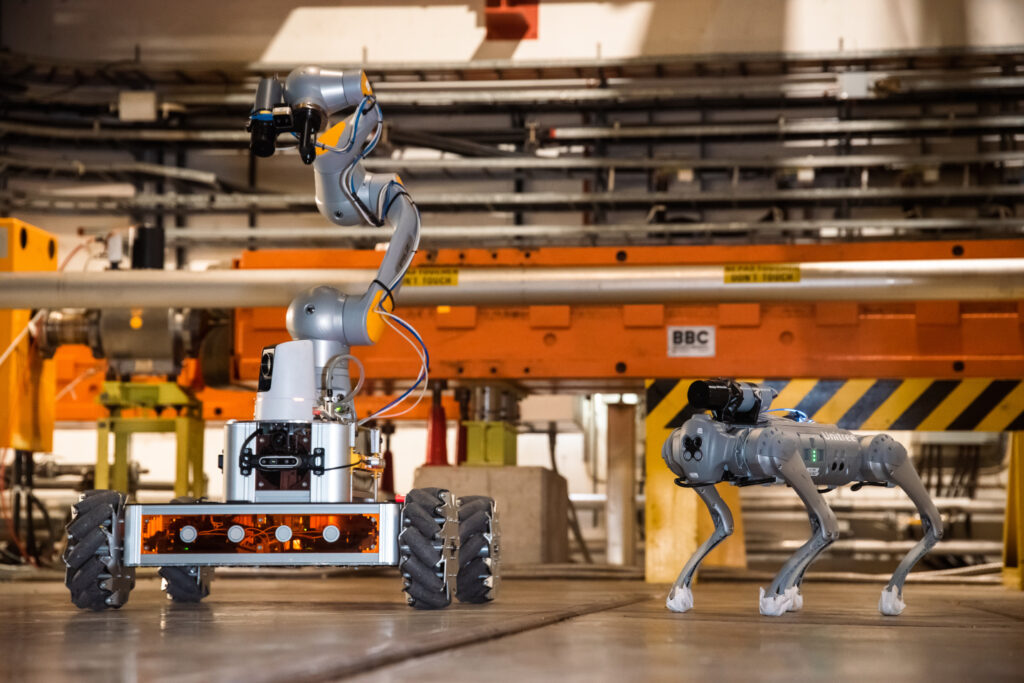
In a demonstration of radiation protection, a four-legged robot dog at CERN successfully patrolled and inspected machinery in a limited area of the Large Hadron Collider (LHC).
Constructed as a 27-kilometre-diameter circular construction beneath Switzerland and France, the LHC contains all the equipment required to generate and collide charged particles at almost the speed of light. Because of the potential for harm to staff from the ionizing radiation produced by this effort, CERN closely monitors the LHC and the surrounding environment.
Exploring CERNquadbot (Robot dog)
The atom-smashing organization has used robots to assist with that task for years. But its present fleet needs to be more capable of overcoming obstacles.
“There are large bundles of loose wires and pipes on the ground that slip and move, making them unpassable for wheeled robots and difficult even for humans,” Chris McGreavy, a robotics engineer in CERN’s Controls, Electronics and Mechatronics (CEM) group, explained.
Therefore, in order to assess the performance of that type of remote-controllable droid, CERN officials resorted to an inspection test using a dog-like robot that looks to be Unitree’s Go1 model, which retails for $2,700.

“We carried out a proof-of-concept survey with the Radiation Protection group in this area. There were no issues at all: the robot was completely stable throughout the inspection.”
Here are a few videos showing the CERNquadbot in operation.
It is reported that CERN is working on software to improve or automate parts of the robodog’s functions, hence increasing its utility in many settings. The ALICE detector, where lead ions clash to create a quark-gluon plasma, is one of the particle accelerator’s other components that the engineers think more robots can be used to monitor.
They will program them to perform various functions, like spotting leaks of water or fire.
There are other machine assistants available besides CERNquadbot. Additionally, CERN uses wheeled modular robots with extended arms and tool capability to work in radioactively hostile environments. Another sort of robot is used to monitor the tunnel of the LHC. Temperature, oxygen levels, and communication bandwidth are all monitored by cameras and sensors on the Train Inspection Monorail (TIM) gadget.
On the other hand, compared to its peers, the four-legged robodog is more flexible. The CERN trundle bots cannot turn curves or climb to other floors as easily as the CERNquadbot, while TIMs are restricted to the tunnel’s ceiling and move along the monorail.
Read more: Astronomers found a new ‘Super Earth’ planet

1 thought on “CERN is training robot dogs to spot radiation hazards at Large Hadron Collider”